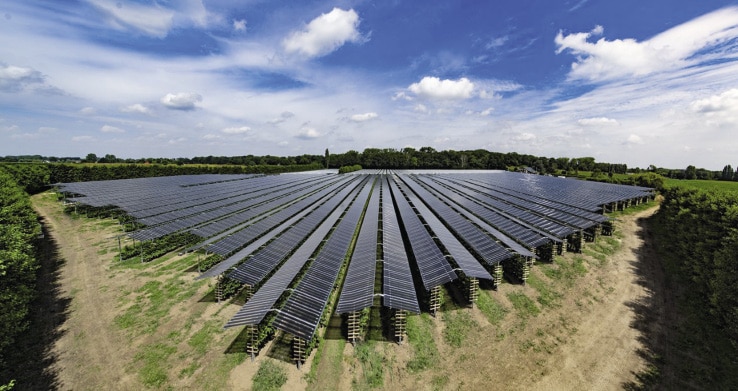From pv magazine Italy
Italy's Council of State has issued two different rulings stating that agrivoltaic projects cannot be treated in the same way as conventional ground-mounted PV plants.
A lawyer who followed the matter, Andrea Sticchi Damiani, told pv magazine Italy that these are only the first two rulings, with more to follow.
“The administrative justice has filled the last gaps, so the legislative framework for agrivoltaics is now completely clear,” he said. “The two sentences outline a substantially different regulatory framework for agrivoltaics and traditional photovoltaics.”
The two rulings relate to two projects located in the Italian province of Brindisi, with capacities of 6 MW and 110 MW. The province is in the region of Apulia, which is has one of the highest rates of installed PV capacity in Italy, due to its high solar radiation levels and land availability.
The development of large-scale PV plants was particularly strong in the 2009-14 period, when generous feed-in tariffs were awarded under the so-called Conto Energia incentive programs, on top of favorable rules for approval processes and environmental permits that were in place.
“The criteria that were used previously, such as the consumption of the territory with respect to the normal agricultural purpose, is an objection that can no longer be raised,” Sticchi Damiani explained. “They are not hectares taken away from agricultural areas, on the contrary, they are often formerly unproductive areas that become productive again.”
He said expects the trend to continue in the months ahead. Prior to the latest rulings of the Council of State, the regional administrative court of Apulia had already decided favorably with regard to the two agrivoltaic projects. These decisions were then challenged by the provincial government, which led to final decisions from the Council of State.
Sticchi Damiani said that the two rulings relate to two projects that were submitted for review before the Italian government issued new guidelines for agrivoltaics.
“With the new guidelines, we now have three types of agrivoltaics: basic non-incentivized agrivoltaic projects, facilities relying on advanced technology that allows access to incentives granted by the Italian energy agency GSE, an even more advanced one that can give access to the rebates provided for by the country's National Recovery and Resilience Plan (PNRR),” he said, noting that the guidelines and the two rulings clarify the authorization process for agrivoltaics. “These rulings affect everything that was carried out before the guidelines.”
The PNRR has allocated €2.6 billion ($2.8 billion) for solar, with €1.1 billion assigned to agrivoltaics and €1.5 billion to PV systems on agricultural rooftops.
This content is protected by copyright and may not be reused. If you want to cooperate with us and would like to reuse some of our content, please contact: editors@pv-magazine.com.



1 comment
By submitting this form you agree to pv magazine using your data for the purposes of publishing your comment.
Your personal data will only be disclosed or otherwise transmitted to third parties for the purposes of spam filtering or if this is necessary for technical maintenance of the website. Any other transfer to third parties will not take place unless this is justified on the basis of applicable data protection regulations or if pv magazine is legally obliged to do so.
You may revoke this consent at any time with effect for the future, in which case your personal data will be deleted immediately. Otherwise, your data will be deleted if pv magazine has processed your request or the purpose of data storage is fulfilled.
Further information on data privacy can be found in our Data Protection Policy.